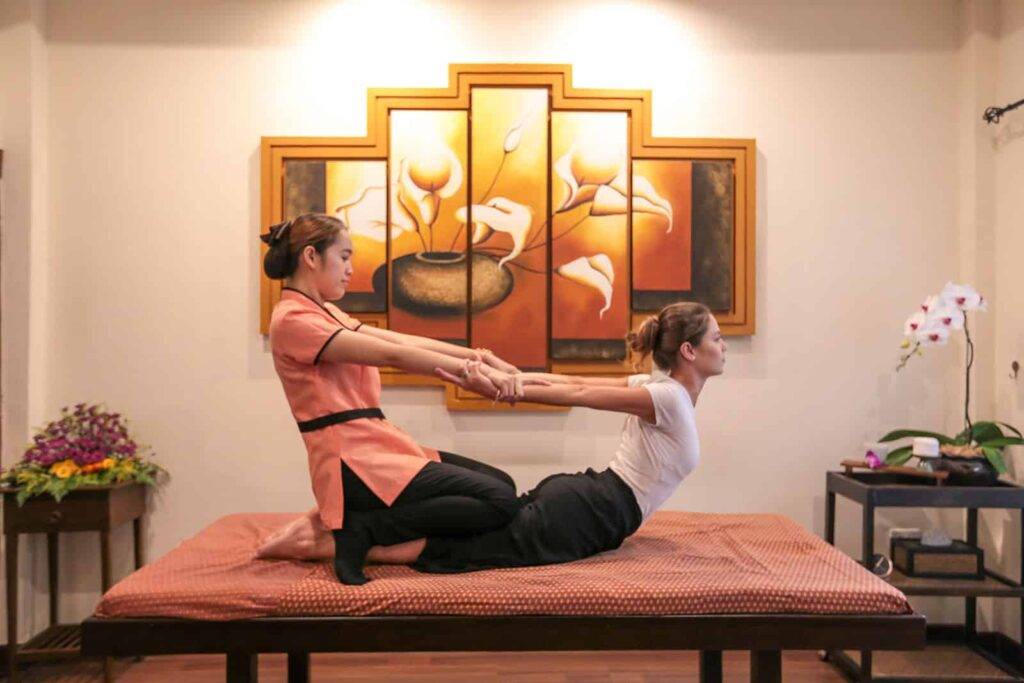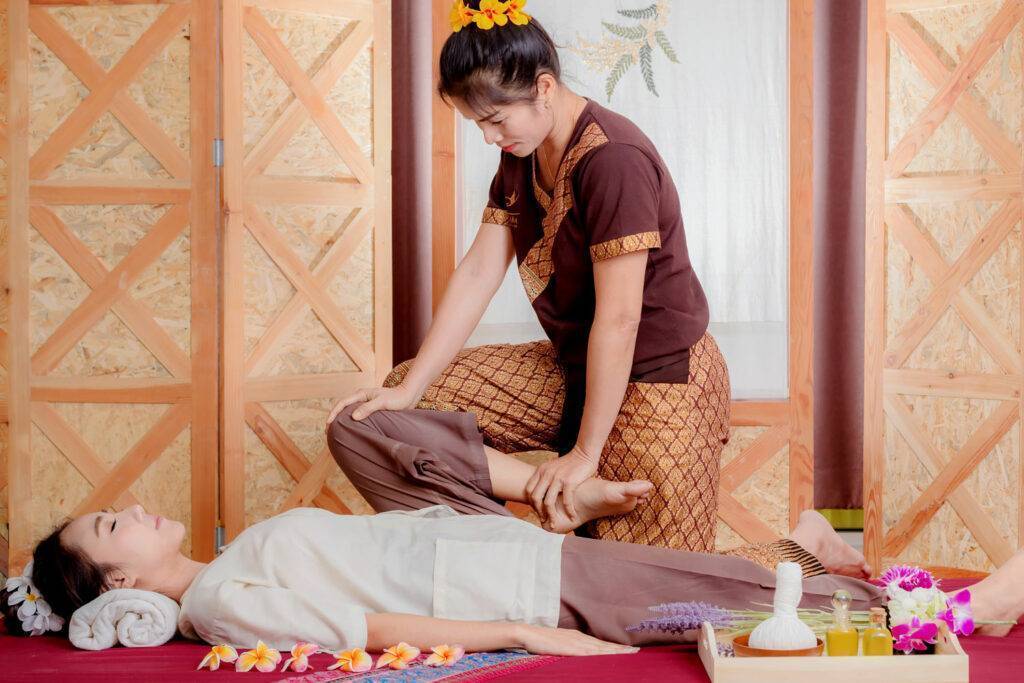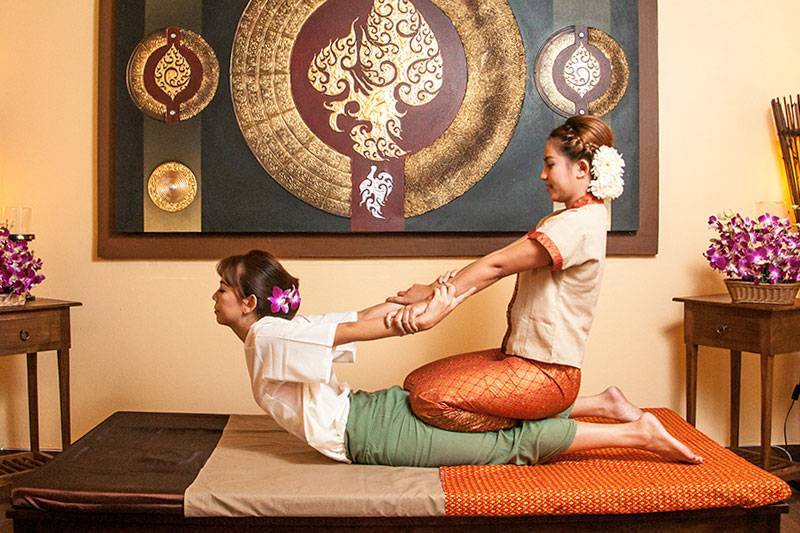In the bustling world we live in, where stress and tension seem to be constant companions, finding effective and holistic ways to relax and rejuvenate is essential.
Thai massage, an ancient healing practice that traces its roots back to Buddhist monasteries in Thailand, has gained popularity worldwide for its unique blend of therapeutic benefits and deep relaxation.
In this blog post, we will explore the myriad benefits of Thai massage, delve into the techniques employed, and provide insights into what you can expect during a session.

Benefits of Thai Massage:
Stress Reduction:
- Thai massage is renowned for its ability to reduce stress and promote relaxation. The combination of gentle stretches, acupressure, and rhythmic compressions helps release tension stored in the body, leading to a profound sense of calm.
Improved Flexibility and Range of Motion:
- The stretching techniques used in Thai massage target muscles, joints, and connective tissues, promoting flexibility and enhancing the range of motion.
- Regular sessions can contribute to increased suppleness and improved overall mobility.
Pain Relief:
- Thai massage incorporates acupressure to stimulate energy pathways, known as sen lines, throughout the body. This can help alleviate pain, particularly in areas prone to tension and discomfort, such as the neck, shoulders, and lower back.
Enhanced Circulation:
- The combination of compression and stretching movements in Thai massage stimulates blood flow, improving circulation.
- This enhanced circulation can contribute to better oxygenation of tissues, nutrient delivery, and overall cardiovascular health.

Energetic Balancing:
- Rooted in traditional Thai medicine, Thai massage aims to balance the body’s energy, known as “sen.”
- By working on specific energy points, the massage helps restore equilibrium, promoting overall well-being and vitality.
Techniques Employed in Thai Massage:
Sen Line Activation:
- Therapists use their hands, thumbs, and even feet to apply pressure along the sen lines, promoting the flow of energy and releasing blockages.
Yoga-Inspired Stretches:
- Thai massage incorporates passive yoga-like stretches, where the therapist gently guides the recipient into various poses. These stretches aim to improve flexibility and release tension.
Joint Mobilization:
- Gentle joint rotations and movements are employed to enhance flexibility and alleviate stiffness in the joints.
Compression Techniques:
- The therapist uses rhythmic compressions with their palms, fingers, elbows, and sometimes feet to target specific muscle groups and stimulate circulation.

What to Expect During a Thai Massage Session:
Comfortable Attire:
- Wear loose, comfortable clothing as Thai massage is typically performed fully clothed. This allows for ease of movement during the stretches.
Communication with the Therapist:
- Communicate your preferences, any specific areas of concern, or health conditions to the therapist before the session begins. This ensures a personalized and safe experience.
Relaxing Atmosphere:
- Thai massage is often performed in a serene and quiet environment, enhancing the overall relaxation experience.
Duration of the Session:
- Thai massage sessions typically last between 60 to 90 minutes, allowing ample time for the therapist to address various areas of the body.
Conclusion:
Incorporating the ancient wisdom of Thai massage into your wellness routine can be a transformative experience.
From stress reduction to improved flexibility, the benefits are vast.
As you embark on this journey, remember to communicate openly with your therapist, embrace the unique techniques, and savor the holistic healing that Thai massage offers.
It’s not just a massage; it’s a pathway to rejuvenation and balance.

